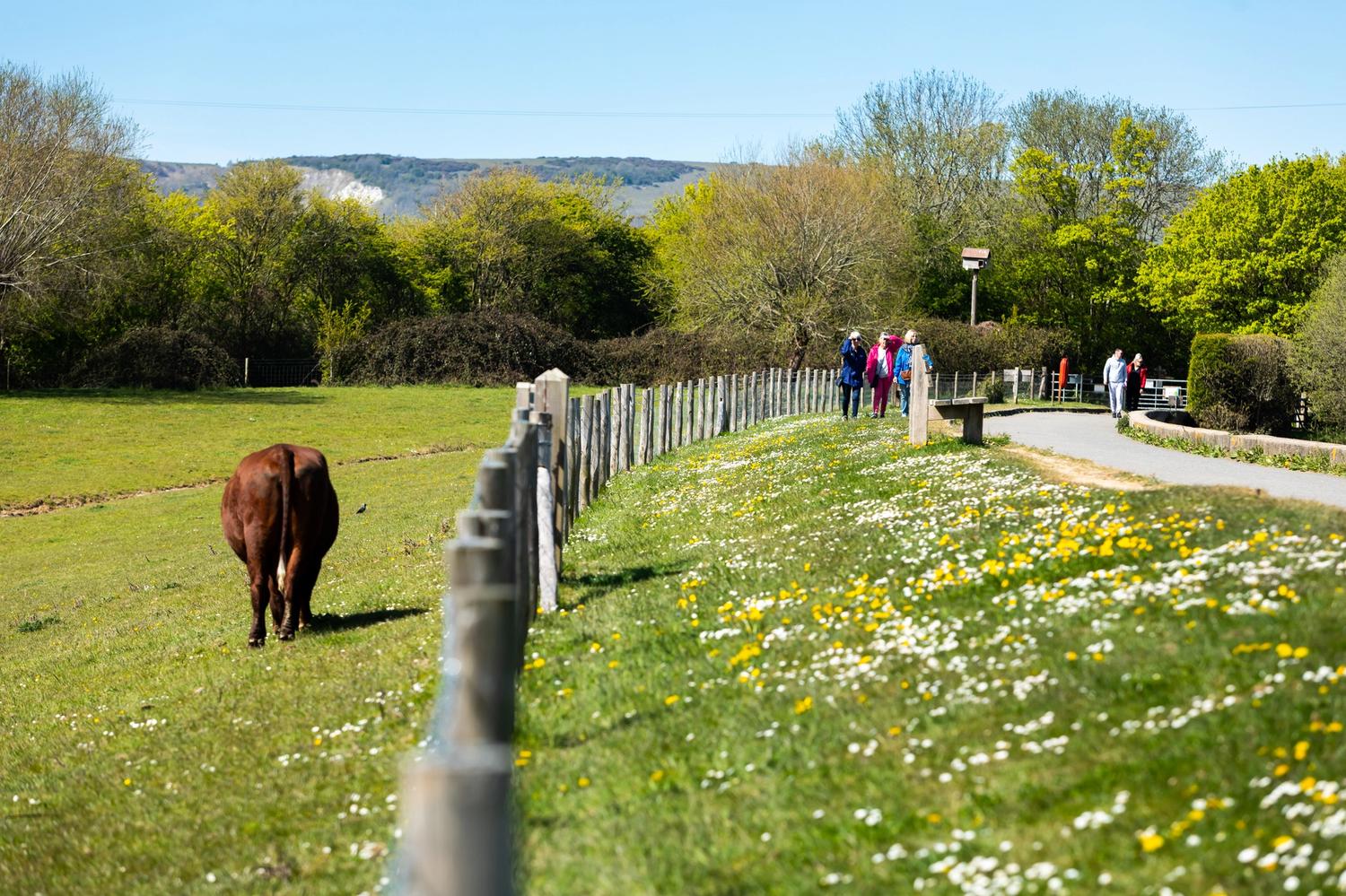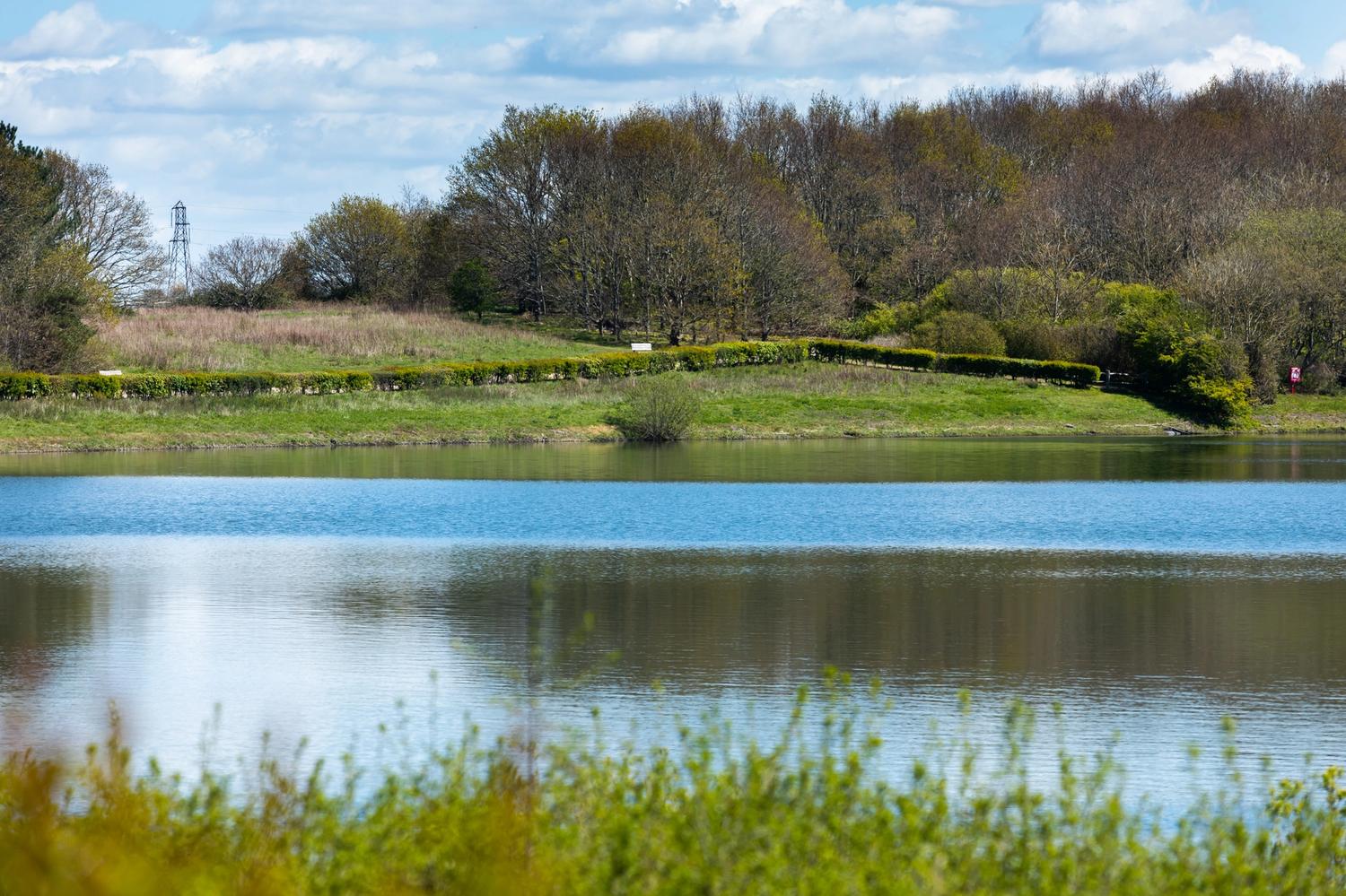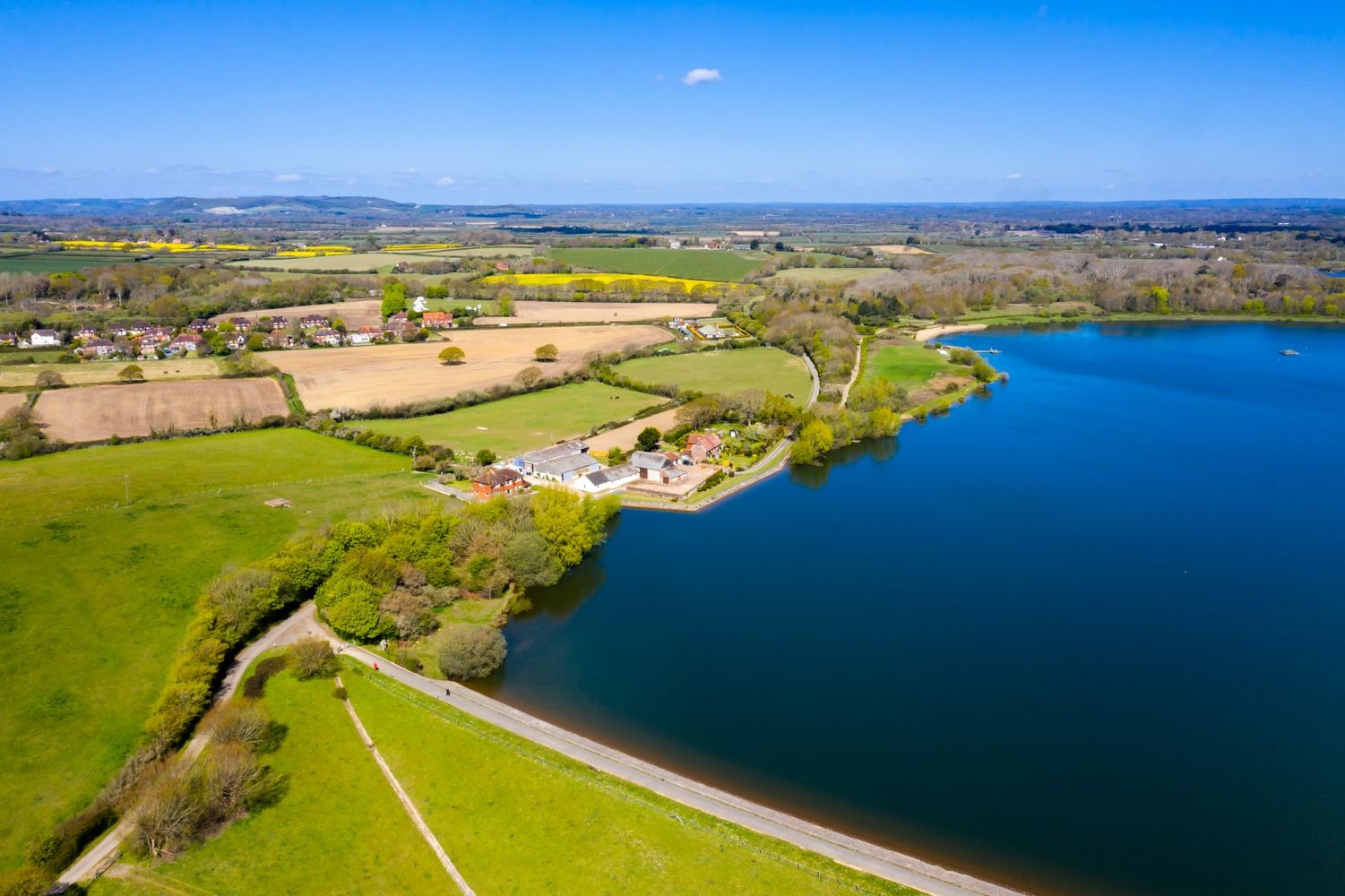Arlington Reservoir, near Polegate in East Sussex, is a Local Nature Reserve and is one of the 33 Sites of Special Scientific Interest that we own or manage.
Construction of the reservoir began in 1969 to meet the growing demand for tap water. A dam was built across the River Cuckmere, and the spoil from the excavation was used to build the rolling landscape around the reservoir's edges.
During excavation, animal remains – including a mammoth tusk, bison horn and the skull of a woolly rhinoceros were discovered.


A wildlife haven

Arlington Reservoir provides a sanctuary for thousands of over-wintering birds such as wigeon and shoveler – as well as great crested grebe, Canada geese, kingfisher and barn owl. Occasionally, Arlington Reservoir is visited by ospreys as they migrate to and from Africa in the autumn and spring. The reservoir is home to many fish species, including bream, roach, perch, eels, carp and gudgeon.
The reservoir site includes meadows and pockets of woodland, where coppicing—the practice of cutting back trees to encourage new shoots to grow—is used to encourage a diverse range of flora to grow in the wooded areas. Coppicing takes place continuously around the site, but each tree is only cut once every seven to fifteen years. The coppiced wood is re-used to create fencing around the reservoir site.
Coppicing allows more sunlight to reach the ground, creating beautiful displays of spring flowers and providing habitats for birds such as nightingales, and dormice – who are rarely seen but can be detected through tell-tale markings on nibbled hazel nuts.
Protecting water quality at source
We’re working with a PhD student from the University of Brighton to improve the quality of the raw reservoir water at source, as part of our innovative catchment management programme.
Our partnership with the University of Brighton helps us deliver industry-leading innovative research, and forms part of our statutory Water Industry National Environment Programme (WINEP) work.
In particular we’re looking at how we might use our award-winning catchment management approach to reduce the presence of algae on the reservoir's surface.
Elsewhere in the area, our catchment management team is working with farmers and landowners in the River Cuckmere catchment to reduce levels of metaldehyde, a pesticide found in some slug pellets, in the river water.
Although any unwanted substances are removed during our extensive water treatment process, it is more economical and sustainable to prevent these substances from entering the water in the first place.
Just a reminder...
- Arlington Reservoir is a Local Nature Reserve, so please respect the Countryside Code and keep to the bridleway and circular footpath
- to protect the wildlife, we don't allow ball games, BBQs, drone flying or cycling on public footpaths
- swimming in the reservoir is dangerous and strictly prohibited
- dogs are welcome, but must be kept on a lead at all times.
Recreational activities
Walking Trail
Our Osprey walking trail offers a three-kilometre circular walk around the reservoir, and passes our bird hide – the perfect spot for some nature study.
Directions
Arlington Reservoir, Berwick, Near Polegate, East Sussex, BN26 6TF
Arlington Reservoir can be found approximately 1.5 miles north of the A27 Lewes to Eastbourne road from the Drusillas roundabout – signposted to Berwick Station and Upper Dicker.
Public car park
Grid reference TQ 52824 07484
what3words /// kicked.scoop.roosters
Facilities:
- Car parking (contactless payment only)
- Walking trail – 3 kilometres
- Food kiosk
- Toilets
